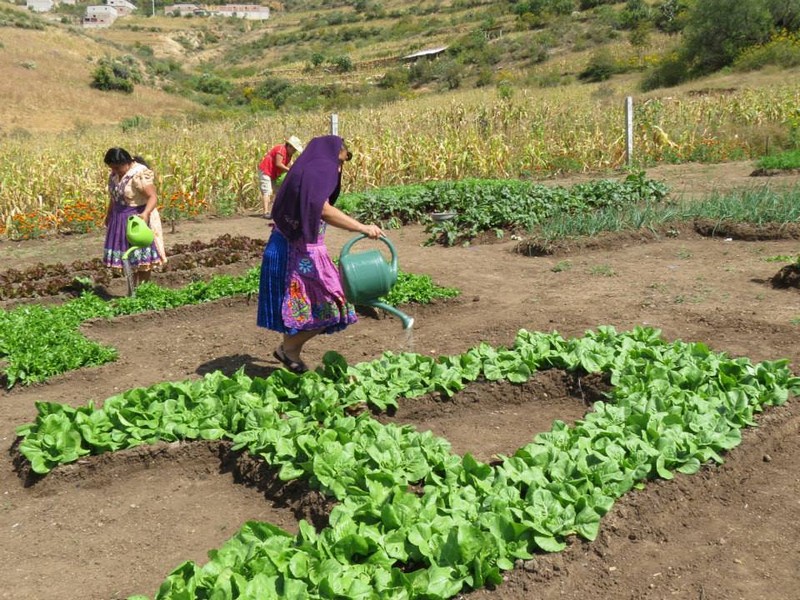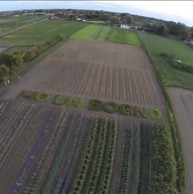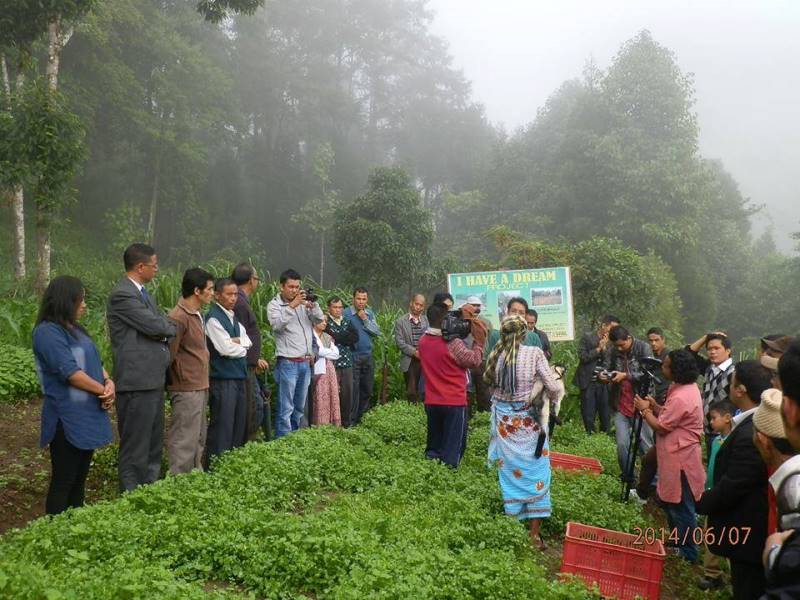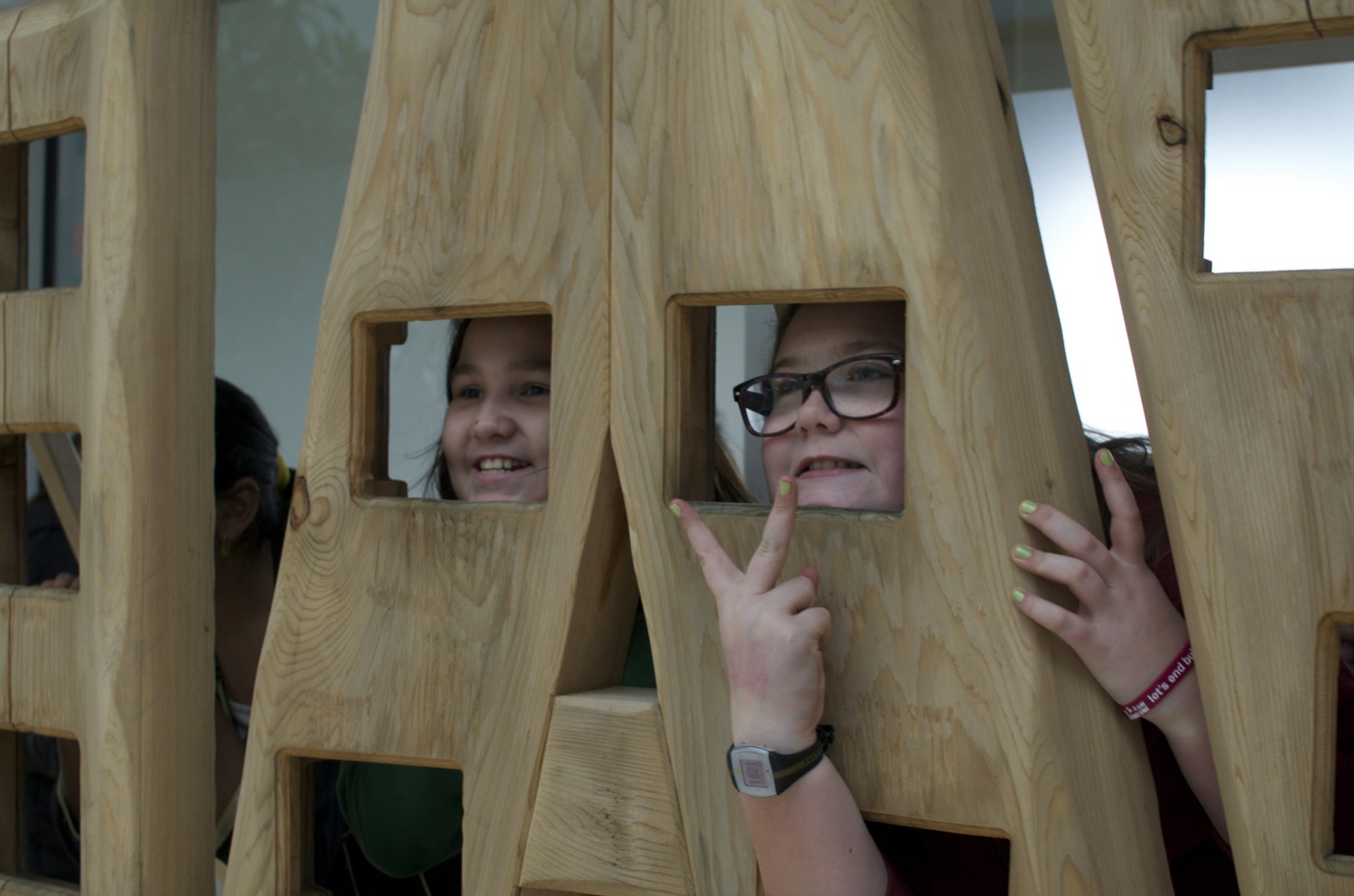Farming and Food Systems: Think Locally, Act Globally
Social Studies - Grade 5
This unit of inquiry is not a recipe book but rather a launchpad to inspire new BIG IDEAS. We encourage you to use and/or modify one, or several of the BIG IDEAS below. Adapt it to the grade/ ability level of your students.
Enduring Understanding
Farming and food distribution systems are connected to local and international environmental, social and economic concerns.
Guiding Questions
How are farming, food supply, and food distribution connected to health, human rights, poverty, hunger, the economy and the environment?
How can individuals participate in food production and food distribution in their communities?
How can local farms and artwork connect concerns across borders and symbolize hope for farming and food systems worldwide?
Mind Opening
Choose or devise practices to encourage students to be open to new experiences and ways of thinking in your classroom. For example, the MindUP in-school program.
Discovery & Inspiration:
Launch the Project
• Introduce the Theme: Present the Enduring Understanding and Guiding Questions using vocabulary that is appropriate for your grade level.
• About Vancouver Biennale: Play a short video.
• Create a Project Space: Brainstorm ideas to make the project theme visual and visible using bulletin boards, and/or a project corner to share relevant materials and inquiry questions and processes.
Reference Resources:
• Shweta Bhattad Vancouver Biennale International Artist Residency Proposal: “I Have A Dream” Project (PDF)
• Vancouver Biennale 2014-2016 Exhibition Theme: Open Borders / Crossroads Vancouver and the Artist Residency Program.
• Shweta Bhattad Squamish Residency Project Information Page
• “I Have A Dream” Project Community Facebook
Learning to Learn:
Community Art Project Inquiry
BIG IDEAS Anywhere educators: View a selected community project video listed as “Related Material”, referring to the vision as outlined in the Biennale Artist Residency project proposal and ask students to complete the Community Art Project Inquiry Worksheet (PDF) individually and then share in pairs.
Shared Insights
• Sharing Community Art Project Inquiry Experience: Ask students to share the Community Art Project Inquiry Worksheet responses in class.
• Significant Aspects of the Artist’s Life & Work :
Using the following information about the artist: Biennale Resident Artist Profile: Shweta Bhattad and the associated project links on the artist profile page, teacher creates stations detailing the artist’s life and work. In small groups students rotate through these stations. Topics might include: (1) education and training; (2) life’s work; (2) materials and processes; (3) beliefs and values. At each station, students answer questions and/or complete tasks. For example, at the station “life’s work” students might plot the artist’s various installations on a map of the world. Encourage students to draw a parallels to their own lives and reflect on the countries/cities/communities that they have lived in and the significance of these location to them.Larger questions: What is Shweta Bhattad’s vision for the “I Have a Dream Project”? How has she set about to accomplish this dream? How do the “I Have a Dream” global installations connect and spread concerns across borders and symbolize the hope of individual communities?
Inquiry Challenges
• Dr. Martin Luther King & Bhattad’s Global Project
Why does Dr. Martin Luther King’s “I Have a Dream” speech continue to be powerful, 50 years later? How does Bhattad’s work both reflect and connect to Dr. Martin Luther King’s “I Have a Dream” speech and vision?
1/ Inquiry might begin with the phrase “I Have a Dream” written on the board, ask the question: Have you heard these words before? If yes, in what context?
2/ Students read Dr. King’s entire speech or this abridged version (PDF) and/or listen to the audio / watch the video & introduce/revisit the concept of Historical Evidence.
3/ Follow up with further investigation into the life of Dr. Martin Luther King Jr. and the Civil Rights Movement.
4/Students treat the speech as historical evidence completing the Historical Thinking Evidence worksheet (Word) and answering the following questions: When was this work produced? What do you know about the speaker, Dr. Martin Luther King, Jr.? What might have been Dr. King’s purpose in writing this speech? What do you think is the intended message of this speech? Who do you think was the intended audience? What was going on in the society where this artwork was created that might help us interpret it?
5/ Listen to the speech again and discuss: Do you find this speech inspiring? Why or why not? Are the messages conveyed in this speech still relevant today? Why or why not? How would you define discrimination? In what ways are people discriminated against? Where does such discrimination take place?
6/ Teacher may use the following NY Times Pulitzer Prize-winning literary critic’s piece, “The Lasting Power of Dr. King’s Dream Speech,” to further investigate consequence & consequence. Questions: Do you think the messages conveyed in this speech still relevant today? Why or why not? What do you think were some of the short-term consequences of the Dr. King’s speech? What do you think were some of the long-term consequences? Were there any unintended consequences of the speech? If so, what were they?
7/ Class revisits the idea that Vancouver Biennale’s 2014/2016 exhibition: Open Borders / Crossroads Vancouver and the Artist Residency Program was initiated with the dream of opening up borders and bringing artists together in Vancouver to collaborate on social issues and art.
8/ Discussion: Do you think that this program reflects Dr. King’s vision? Why?/ Why not?
• Global Issues in Food Production: Farmer Suicide – What is Bhattad’s dream for her country and the world? Does it reflect Dr. King’s vision? Why are farmers committing suicide in India?
1/ Teacher introduces the global problem of farmer suicide and the plight of Indian farmers by referencing statistics from the resources below.
2/ Students inquire into the history, causes, responses, and possible solutions to problem of farmer suicide in India using the Farmer Suicide Data Collection Chart (Word) to summarize the results of their investigation.
3/ Class shares their insights and continues to revisit the question: What is Bhattad’s dream for her country and the world? How does it reflect Dr. King’s vision?
Resources: Plight of global farmers: Newsweek (10/ 04/2014); Huffington Post (07/23/2014).; Wikipedia. Farmer Suicide in India: Indian farmers and suicide: How big is the problem? (01/23/2014) – BBC UK researchers unravel reasons behind India’s farmer suicides (04/18/2014) – India Times Seeds of suicide and slavery versus seeds of life and freedom (03/30/2013) – Aljazeera New evidence of suicide epidemic among India’s ‘marginalised’ farmers (04/17/2014) University of Cambridge, Research; GM Genocide? (03/13/2014) The Economist; Indian farmers driven to suicide as hail ruins crops (03/23/2014) – Reuters; After Farmers Commit Suicide, Debts Fall on Families in India (02/23/2014) – NY Times.
• Field Trip: Local Farms & Farmer Markets – Where does our food in BC come from? Consider engaging in field trip to a farmer’s market or a farm in the Lower Mainland. Classes can use this visit to collaborate on the “I Have A Dream” global project (see Student Action Projects below). Possible locations and resources include:
- Links to provincial farm tours from Agriculture BC
- Vancouver Farmers Market (Growers, vendors and community information)
- The Terra Nova Schoolyard Society (A school farm project based in Richmond) –
- UBC Farm (The last working farm in Vancouver.)
- A Guide to Cattle Ranch Tours (PDF)
Use hashtags Pick a hashtag and use to capture your field trip. Students can use the hashtag for Twitter, Instagram, Vine, Facebook, and Google plus, then collect them all in one place using a service called Tagboard. This is a fun way to document your trip using your favorite social media platforms. You can see an example of what that looks like here.
• Food in BC: Mapping Agricultural Regions – Where does our food in BC come from? How does food get to supermarkets and grocery stores in BC?
1/ Students share their insights using the following questions: Who has a garden in their backyard? Who knows someone with a garden in his or her backyard? Who knows a farmer/rancher? What do they grow/produce?
2/ Show students visually that BC has a vast agriculture industry using Agriculture in BC Map (PDF) and explore local farms using Family Farm Locator from Local Harvest .
3/ Teacher-created Jigsaw activity using the Agriculture BC Resource Package (PDF).
4/ Using the Agricultural Regions Map (PDF), students work in small groups visiting two regional profile stations and use the Agricultural Regions Worksheet to take notes.
5/ Students share what they have learned with group members and every student fills in the missing sections of their charts.
• Food in BC: The International Movement of Food – Where does our food in BC come from? How does food get to our supermarkets and grocery stores? What are alternatives to shipping food from other countries to our grocery store?
1/ Using the same groups from the above inquiry “Mapping Agricultural Regions” students add gross farm receipts from the various regions to their Mapping Agricultural Regions inquiry.
2/ Teacher challenges the class with the information that roughly 80% of gross farm receipts come from the Okanagan and Lower Mainland and 80% of BC’s population lives in these areas. Ask the students why is it difficult to grow such abundance of food in other parts of BC? (Over 90% of the province is covered by mountains or has an elevation over 1,000 meters).
3/ Students share insights about what happens to agricultural land when more people move into these desirable areas? Ask students: Where will we get our food from if we continue to use such prime land?
4/ Teacher introduces the concept of preserving perishable food. Then teacher talks about salsa, its origins, and situating it as an example of a way to preserve the fresh vegetables long after harvest.
5/ Teacher distributes bowls of salsa and nacho chip and the Corn & Black Bean Salsa Map (PDF). Using smartphones or other devices, students are to calculate how many kilometers the ingredients have traveled.
6/ Referencing the resources below and/or other sources, students to inquire into the following questions: How does food traveling great distances affect the health of our planet? What is the impact on food prices? What alternatives exist? How can people extend our growing season? Helpful Sites: Alternative Food Systems; BC Greenhouses
• Food & Hunger: Needs vs. Wants, Part I – How is poverty connected to hunger?
1/ Ask students to name some of the reasons why they think people go hungry and why hunger is still a problem in the world today. List as many ideas as they can think of. Share with students some of the facts mentioned at the World Food Program’s Facts and Figures page. It is important for them to understand that there is no single cause of world hunger and that it is a very complex issue.
2/ Students are asked to share what images that come to mind when they think about poverty and make a web chart of words depicting this image. (Poverty might be described as a person’s inability to access the basic needs for survival.)
3/ Students share insights to the following: Think about poverty in your immediate community and within your town/city. Do we have people living in poverty? How do we know? What assumptions do people make about people living in poverty? Why do we make these assumptions? (i.e., consider stereotypes, biases, prejudices and discriminating actions against people living in poverty).
4/ Discuss the difference between the terms “needs” and “wants.” Ask the class to provide examples of what students their age would consider common “wants.” Have student’s pair up or form small groups to make a list of the top five “needs” for their survival and the top five things they “want” in their life, ranking both lists in order of importance.
5/ Students complete Effects of Poverty Worksheet (Word), then discuss the following: How is hunger connected to poverty?
• Food & Hunger: Needs vs. Wants, Part II – How is poverty connected to hunger?
1/ Ask students to think about the foods they eat on a regular basis (home, school, lunch and snacks) and make list of the ingredients in these meals. Expand the list to include the foods they generally have in their refrigerators @ home.. Ask them to guess how much they think these basic items cost.
2/ Distribute Worksheet: Grocery Shopping On a Budget (Word) and ask students to complete the steps.
3/ Now share some facts & figures on hunger in the Canada (see Web sites below) See: Food Banks Canada Hunger Count; The Salvation Army Canada; Ontario Association of Food Banks; Food Banks Canada
4/ In small groups students research hunger using some of the following questions: Are there people suffering from hunger in your community? What are some of the reasons why a person in your community would go hungry? Is there anything being done in your community to combat hunger?
5/ Groups may develop a plan of action at local level through the following questions: What is your biggest area of concern around this issue? What do you think needs to be done to combat this issue? Thinking about what we already do in our community to help fight this issue, where do you still see areas of need? What more can we do? How can we reach out and help the people in your community who are suffering from hunger? Groups choose one idea and discuss reasons why they think it might work as well as reasons why it might not be completely effortless to implement. Helpful links: Heifer International; Oxfam International; United Nations World Food Program
6/ Groups consolidate their findings and solutions into a slide show using a video-creation platform like Animoto. Educators can get a free account at http://animoto.com/pro/education
• Food in BC Schools : Healthy Eating & Schools – How can we analyze and examine our environment for healthy choices?
1/ Using the Food Squad Worksheet (Word) or design, student squads investigate an area of the school where food is sold (such as cafeteria, canteen, vending machines, hot lunch programs, foyer areas of sports events) to determine if their school is a healthy nutrition environment. This can potentially be expanded to other community sites the students frequent such as hockey rink, swimming pool, curling rink etc..
2/ Squads reports back to the class based on the collected information and the class makes a decision if each the school as a whole offers a healthy nutritional environment.
3/ Students may draft congratulatory letters or design a poster for healthy sites or come up with solutions for unhealthy environments. Helpful Links: Eating Well with Canada’s Food Guide; Eating Well with Canada’s Food Guide: A Resource for Educators & Communicators; Canadian Physical Activity Guidelines
• Consolidation: How are farming and food systems connected? Students to view the documentary Dirt! and complete the Dirt Viewing Guide (Word). Ask students to share and discuss their responses in small groups. Teacher to initiate a classroom discussion around the viewing guiding questions. The final question leads to Student Creation & Taking Action.
Student Creation & Taking Action:
1/ Come up with ways that your classroom can connect with the Global “I Have A Dream” Community Project. Here are some suggestions:
- connect the classroom with a local farm to collaborate on a “I Have A Dream” project
- tell the story of food production, distribution from the farmer’s perspective.
- Create a project video to be part of the global project.
• Classroom Gardens: How can food production be realized in a small space? In small groups students choose one of these methods of growing your own veggies
- Windowsill Gardens
- No-Dig Gardens
- Coffee Sack Potatoes
- Upside-Down Gardens
- Hanging Gardens
- Let’s Get Growing ( A Comprehensive kids’ gardening resource, by the American National Gardening Association)
• Public Exhibition/Sharing
As a culminating event for this project, students can participate in a public exhibition and message sharing. Each team might create a display that includes posters with their learning points on sustainability, binders that included their garden system’s manual and maintenance log, and video documentaries of their team’s project process.
• Local Eating Challenge – How can individuals take action to promote local, sustainable food sources?
In pairs or groups of four, students define what local eating means to them. For (i.e.: a B.C. diet; the 100 Mile Diet; a 10 Mile Diet!. Groups or individuals fill out the Plan of Action Worksheet (PDF) outlining their personal and fund-raising goal(s) and present these to the class. Groups/individuals ask friends and family to pledge them! Donate the money to Vancouver’s Growing Chefs or another community organization supporting local food production.
Reflection
• Teacher and students can reflect on their entire learning process by revisiting the Enduring Understanding and Guiding Questions.
• How did the unit of study open inquiry, create cross–curricular learning opportunities and/or apply learning to real life situations? Has this unit of inquiry changed your opinions, values and worldview? In what ways, if any, has it helped you grown as a learner?
Ideas for Cross-Curricular Access
• Home Economics/ Art: Creating a Local, Seasonal “I have a Dream” Cookbook – How can we incorporate local, seasonal food into our diet with recipes that are both delicious and nutritional?
1/ Using the BC Seasonal Food Chart choose ingredients from two seasons and research and test appropriate recipes that use these ingredients.
2/ Taste Test: The dish need to be rated as “delicious” by the class and teacher before they can be included in the class cookbook.
3/ The class can decide if the cookbook should include photos of the dishes.
4/ The cover of the cookbook can be a response to the “I Have a Dream” slogan using the ingredients used in the cookbook.
5/ Produce copies of the cookbook for sale with proceed donated to a charity of choice that relates to farming and food such as Vancouver’s Growing Chefs
• Language Arts: “I Have a Dream” and literary terms – How does the use of figurative language make King’s “I have a dream” speech both memorable and powerful?
1/ Teacher introduces/ reviews the Literary Terms Chart and split the class into small groups.
2/ Groups competition: Students search for as many literary terms as they can find within King’s speech making reference to the Literary Terms Chart.
3/ Review findings (see the key Here) and discuss about how King’s use of these figurative language helped him to spread his message.
Credits
Written by: Stephanie Anderson Redmond,B.A.; B.Ed.; M.Ed.; Ph.D., Department of Curriculum and Pedagogy, UBC
©2014 Vancouver Biennale







